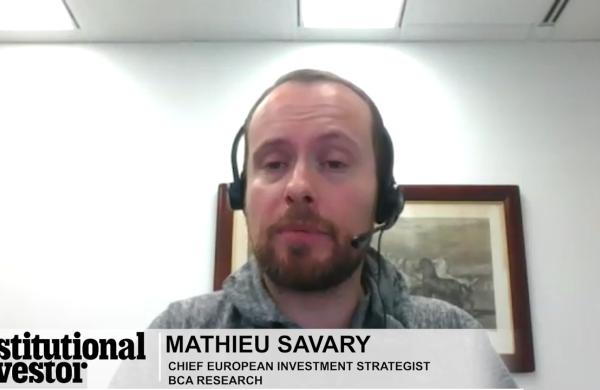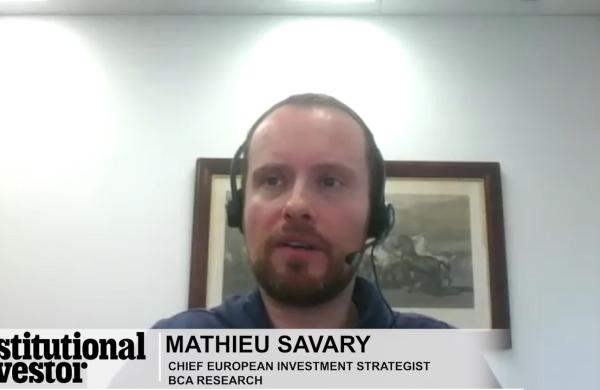To build his private bank, Parviz Aghili must bridge a vast gap between Iran's reformist government and its ultraconservative clerics. His dilemma is modern Iran's.
By Colin Barraclough
December 2001
Institutional Investor Magazine
When Ayatollah Ruhollah Khomeini overthrew Shah Muhammad Reza Pahlavi and established an Islamic republic in Iran in 1979, Parviz Aghili, like other skilled, middle-class Iranians, fled the country with his family. As an experienced banker who had been deputy managing director of Iran's Development and Investment Bank, he was able to land a good job in nearby Dubai as executive director of Wardley Middle East, Hongkong & Shanghai Banking Corp.'s regional investment banking arm. But after five years Aghili moved to Toronto, where he first worked for Hong Kong Bank of Canada, then headed a leasing company and ran a struggling manufacturer in northern Ontario on behalf of its chief creditor, ANZ Bank.
Yet the emotional tug of his homeland remained strong. So when Aghili heard in 1993 that Iran was ready to permit private banks again, he returned to Tehran and applied for a banking permit. "When I first came back, the central bank told me it would take two months to get a banking license," he says ruefully. "But this is Iran - two months turned into six years." In the interim, he became a stockbroker.
But finally, in mid-1999, Aghili, then 53, was given a preliminary license to establish what Iran's ruling clerics chose to call a "nonbanking credit institution." In all but name it was a bank: The only special restriction was that it couldn't offer checking accounts. "Under Islamic law, if you bounce a check, you go to jail," Aghili says. "The authorities just didn't want those problems arising."
Aghili set about turning his nonbank bank, the Karafarinan Credit Institution, into a full-service finance house serving corporate and retail customers. The name translates roughly as "job creators." He raised some $17 million in initial capital from private Iranian investors, installed a computer system and opened two branches in Tehran. Soon the bank began to attract customers who wanted better returns on their deposits and readier access to capital than that provided by state banks or local money lenders.
In September, two years after its launch, Karafarinan received its full banking license, becoming Iran's first full-fledged private bank in more than two decades.
Aghili's experience epitomizes the difficulties faced by Iranian businessmen as the country's political leaders seek to enact reforms and kick-start Iran's stalled economy under the skeptical - and usually hostile - eyes of the ruling mullahs. Ordinary Iranians, many too young to remember the Shah, abhor the country's semipariah status and call loudly for Iran's reintegration into the world economy. The country's youth - more than half the population is under 21, and both men and women are eligible to vote at 16 - have been the driving force behind the reform movement. Politicians have listened. Even the more conservative clerics are becoming more realistic about the need for foreign investment and expertise to halt economic erosion.
The election in 1997 of a moderate cleric, Sayed Muhammad Khatami, as president accelerated efforts to modernize the Islamic republic. The movement gained impetus with the election last year of a reformer-dominated parliament, or Majlis, and Khatami's own reelection - with a 77 percent majority - this past June. The president's background is that of a leftist intellectual who favors more equitable distribution of wealth over economic development. Still, Khatami has given the central bank scope to manage Iran's foreign debt and has overseen a greater opening to foreign investment, particularly in the oil, gas and petrochemicals industries. However, his efforts to cut red tape and reduce corruption, privatize state-owned industries and diversify the economy away from oil exports have fizzled in the face of opposition from the mullahs and some of his own more left-wing supporters.
Nonetheless, the president has ushered in a policy of d,tente with Iran's Arab neighbors, normalized relations with Europe and even put out cautious feelers toward the Great Satan itself, the U.S. Khatami was quick to condemn the September 11 World Trade Center attacks. In a speech at the United Nations, he declared that the assault had been "perpetrated by a cult of fanatics who had self-mutilated their ears and tongues, and could only communicate with perceived opponents through carnage and devastation."
Many Iranians appear to share his perspective: Perhaps the most striking reaction in all of the Middle East to the September 11 World Trade Center attacks were the pro-American demonstrations in Iran, a country that is, after all, an Islamic theocracy that shares a 560-mile border with Afghanistan.
However, neither ordinary Iranians nor the president and elected government wield ultimate power in Iran. Ayatollah Sayed Ali Khamenei, Iran's unelected supreme religious leader, or Vali Faqih, has the final say on policy decisions, and he has routinely stepped in to curb impatient reformers. Meanwhile, senior clerics in the judiciary and in the security forces have dug in their heels against reforms, closing progressive newspapers, imprisoning dissidents and tossing out liberalizing legislation.
Nowhere has the battle for Iran's future been more intense than over economic policy. Shortly after the '79 revolution, Iran's new clerical rulers nationalized the banks, kicked out foreign financial institutions, eliminated interest-based banking and insisted that banks adopt Islamic guidelines. Officials designed a system whereby banks would offer "profits" on deposits and charge "fees" on loans.
Ever since, the banks have struggled to provide credit to Iran's business sector. Returns on deposits have consistently fallen below the inflation rate. Unable to resist the demands of government ministries and the bonyad (Iran's powerful, ostensibly private Islamic charities), the five large national commercial banks - Bank Mellat, Bank Melli Iran, Bank Saderat Iran, Bank Sepah and Bank Tejerat - have become encumbered with loans to the bloated state industrial sector. Foreign banks, which have been allowed to reopen representative offices, are not permitted to conduct business in Iran. As a result, the private sector has had little sustained success obtaining long-term credit.
The new rules also emasculated the central bank. Unable to use interest rate policies to squeeze the money supply, it had to attack inflation by controlling credit through manipulation of the banks' reserve ratios and limits on government borrowing. The tools proved unwieldy and largely ineffectual.
Central bank officials have long recognized that a shake-up of the financial sector is needed to promote Iran's private sector and boost nonoil exports. Shortly after his '97 election victory, President Khatami described the economy as "sick." He has called for honoring the promises of Iran's latest five-year economic plan, which commits the government to a range of fiscal and structural reforms by 2005. Among the key ones: Remove most state controls from industry; deregulate large chunks of the rest of the economy, including banks; liberalize trade rules; boost nonoil revenue sources; unify currency rates; and attract foreign investment.
To Iranian entrepreneurs, the economy's ills are all too obvious. A complex, multitiered exchange rate system hinders exports simply by making the process too complicated. A stringent labor law offering sweeping job protection discourages managers from hiring new workers. Although the official inflation rate is 14.5 percent, unofficial estimates put it at least 5 percentage points higher. Government subsidies for fuel, food and energy funded with oil revenues suck up valuable hard currency. Constantly changing tax and customs laws render planning meaningless.
What's more, huge swaths of the economy are dominated by the Bonyad-e Mostazafan (Foundation of the Oppressed), a vast conglomerate whose aggressive business practices have extinguished competition in almost every sector of Iran's economy. Set up with assets abandoned by the former Shah and his cronies or seized from Iranian citizens since 1979, the Bonyad-e Mostazafan operates a near-monopoly in many industries, using its financial muscle to drive entrepreneurs out of business. Enjoying the patronage of the mullahs, it operates more or less with impunity.
Like other Iranian entrepreneurs, Aghili advised President Khatami to institute radical reforms. "I wrote to Khatami, setting out all the options we needed to take," he says. "Iran's financial sector needs a total overhaul, and I detailed every way it could be improved. I talked about the need to recognize the use of interest rates, the need to reform the insolvency law, to allow free foreign exchange, to force the bonyad to pay taxes, and to invest our oil revenues rather than squandering them."
However, the battle to persuade conservative clerics of the need for reform has been long and arduous. Well-versed in Islamic theology but ignorant of economics, many mullahs are deeply suspicious of modern finance and its practitioners. Several years were wasted in the late 1990s in an effort by the Khatami regime to permit full-fledged foreign and private banks but restrict them to free-trade zones located on Iranian islands in the Persian Gulf. Despite liberal investment codes, few were willing to operate on offshore islands hundreds of miles from the country's population centers in the north.
Some pragmatists, such as U.S.-educated Iranian central bank governor Mohsen Nourbakhsh, have called for the more radical options of privatizing state banks, floating the rial and permitting foreign banks to open branches. But Nourbakhsh's views have drawn the ire of conservative clerics in the powerful Shura-e-Nigahban, or Council of Guardians, an Islamic oversight body. Fearing a weakening of the state's hold on the economy - and the collapse of the practically insolvent national banks - the council refused to sanction the banks' sale. But Nourbakhsh's persistence won a valuable compromise: In July the council agreed to a lesser demand - the creation of new private banks.
In addition to Karafarinan, two other institutions - Bank Parsian and Bank Eghtessad Novin - have successfully fought for full banking licenses. However, both are partly owned by state-run investment funds, making them beholden to Tehran for capital. Karafarinan, therefore, is Iran's only authentic private bank.
For Aghili, the years between his return to Iran and the actual founding of his bank were far from wasted. During the 1990s he helped build the country's largest brokerage house, BourseIran, in which he's still a significant shareholder; established a business consulting firm; and published a journal, Iran Economics, which presents the case for reform. During this waiting period, Aghili made contacts that began a customer base for his bank. "Running a brokerage on the stock exchange meant that I got to know the owners of Iran's main construction and manufacturing firms," he notes.
Karafarinan has made a specialty of lending to Iran's booming construction industry. As of this autumn it had $8 million in loans outstanding as well as $14 million in contractor bonds (such as advanced-payment guarantees). Profits in its first full year of operation were $200,000. The bank is about to open a branch in Isfahan, Iran's second most important business center. "With bonds and credit facilities, we're doing fine," says Aghili. "We've got the customers." On the strength of the bank's performance, he's in the midst of raising $8 million more in capital from his 500 Iranian shareholders to meet the $25 million minimum for a fully licensed bank.
Nevertheless, Karafarinan is tiny, and its impact on the economy is bound to be modest. In any case, the central bank has set cautious limits on private bank activities, such as stipulating that the rates they pay on deposits can be just 2 percentage points higher than those at national banks (currently, 19 percent versus 17 percent for five-year deposits). "On the deposit side we will do everything we can to attract customers," says Aghili, "but it's going to take some time before we capture much of the country's business."
Central bank governor Nourbakhsh is planning additional reforms aimed at boosting private banks and the private sector generally. For one thing, the bank intends to unify Iran's currency exchange rates, possibly as early as this coming March; this would encourage nonoil exports while injecting some rationality into government budgeting, which is now based confusingly on intermixed official and market currency rates. Some time after that the government may authorize foreign banks to open branches in Iran.
Still, entrenched interests mean that reform will come slowly, and uncertainly. "Economic policy in Iran is forged through compromise," points out Aghili. "But I feel I'm doing my share to correct some of the negative aspects of life here. I'm doing something positive for Iran." The question is whether the mullahs see it that way.





